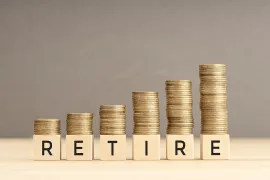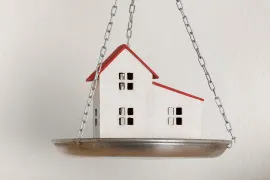Risk and returns
The role of bonds in their portfolio would be a backstop to equity and property declines. Many assets can be depressed as interest rates rise, but government bonds, at the least, are free of default risk and usually rise in price when stocks tumble. If Terry and Mary choose to use Government of Canada or even provincial bonds with slightly higher risks than federal debt and a little more yield, they will have very strong anchors for the rest of their portfolio. There is a cost in investing in senior bonds. That’s reduced returns compared to stocks in the long run and even negative returns of late as interest rates have risen.The family RESP has $99,000. If the couple doing two-year backup contributions continues to add $900 per month or $10,800 per year and attracts $2,000 from the Canada Education Savings Grant per year until the CESG maxes out at $7,200 per child, then with an assumed rate of growth of four per cent per year until each child is 17 — that’s five years for the elder child, four years for the younger — the plan will have $182,350 or $91,175 per child. That will be enough for four years of tuition and even living on campus or undergrad and post-grad tuition if they live at home.
Their TFSAs have $223,000. If they continue to add $6,000 per year each for another decade and the sum grows at four per cent after inflation, they will have $479,930. That sum, still growing at four per cent per year after inflation and spent over the following 38 years to the couple’s age 90 would provide $23,826 per year.
Their RRSPs total $603,000. If they add the maximum $29,210 per year for a decade and it grows at four per cent per year after inflation, RRSPs will become $1,257,300 in 2022 dollars. If that sum, still growing at four per cent per year, is spent over the following 38 years, it will provide $62,420 per year.
Their $496,000 in taxable property investments growing at four per cent per year after inflation will become $734,214 in 10 years and then support payouts of $36,450 for the following 38 years.
Retirement income
Adding up the numbers, from ages 52 to 65, they would have $62,240 per year from RRSPs, $23,826 from TFSAs, and $36,450 from taxable investments. That’s a total of $122,516. Split and with no tax on TFSA cash flow, they would have $107,700 per year to spend or $8,976 per month after 15 per cent average tax. That is more than present core spending.At 65, they could add Terry’s $10,154 CPP (Mary will have no CPP benefit), and two $8,004 OAS benefits. That would bring the total to $148,678. With 17 per cent average tax but no tax on TFSA cash flow, they would have $127,453 per year to spend. That’s $10,600 per month.
Our four per cent annual post-inflation growth rate reflects an expectation of higher-than-average returns based on their evident skill as investors. Nevertheless, these retirement income numbers are inherently speculative. Taxable investments consist mainly of real estate loans with risks of default and unknown future interest rates. We assume they will have paid off their HELOC but with unknown timing. Or they may carry the loans as long as the interest cost is less than the returns the loans support.
However, using the assumed rate of growth and further assuming no defaults on their private real estate loans, the couple should have a retirement in which present spending can be maintained, Moran concludes.
Time and their demonstrated ability to generate high growth rates in their net worth should support a comfortable retirement with a five-figure monthly after-tax income. Their high savings rate is insurance for risks and potential losses intrinsic in Mary’s private mortgage lending.
Retirement stars: 4 **** out of 5
Financial Post
( C) 2022 The Financial Post, Used by Permission


































